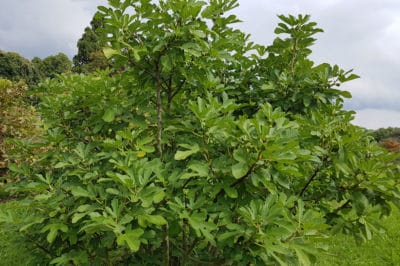About Figs
Figs grow all over the world and, depending on the variety, can be grown in USDA Zones 5 through 11. The edible fig is a Mediterranean native and does best in similar climates. More than 800 different figs have been identified, but most have similar cultural needs. Edible figs can produce two crops a year – the breba crop and the main crop.
Types of Figs
The common fig tree known as ficus carica is only one possible choice. Here are some other kinds:
- Ficus aurea – Florida strangler fig.
- Ficus benjamina – weeping fig.
- Ficus elastica – rubber plant.
- Ficus lyrata – fiddle-leaf fig.
- Ficus pumila – creeping fig.
- Ficus radicans – climbing ficus.
- Ficus scobina – sandpaper fig.
What to Use for Fertilizer
You have two basic choices for fertilizing figs. The first choice is organic compost. You can use compost as a mulch or in the form of a tea. The latter is a good choice for fig plants in containers as you can combine watering and fertilizer in one step. Another choice is commercial fertilizer. Choose a balanced fertilizer with an 8-8-8 or 10-10-10 NPK ratio.
When to Fertilize
Most figs – especially those growing in the garden or orchard – really don’t need fertilizer or need very little. If you are growing in very sandy soil, nutrients will leach readily. Figs that are competing with nearby plants may also need feeding. Otherwise, feed only if leaves are pale or growth is poor.
How to Fertilize
When using commercial fertilizer, fertilize once a month during spring and early summer. Give one- or two-year old trees about one ounce per month. Older trees get about five ounces per foot of height three times yearly – late winter, mid-spring and mid-summer. Apply fertilizer or compost in the plant’s drip zone, at least a foot from the trunk.
When It’s Too Much
Figs are naturally slow growing – a consequence of originating in areas with poor soils. The trunk may split or crack if over-fertilized, especially with excess nitrogen. Too much nitrogen can cause lush growth at the expense of your fruit crop. It also makes trees more susceptible to cold weather.
Other Aspects of Care
Site your figs correctly for best fruit production – they need at least eight to 10 hours of full sun each day. Indoor plants need bright indirect light. Figs are native to low-rainfall areas and over-watering will cause all kinds of problems. Water only when the top inch of soil is dry.
